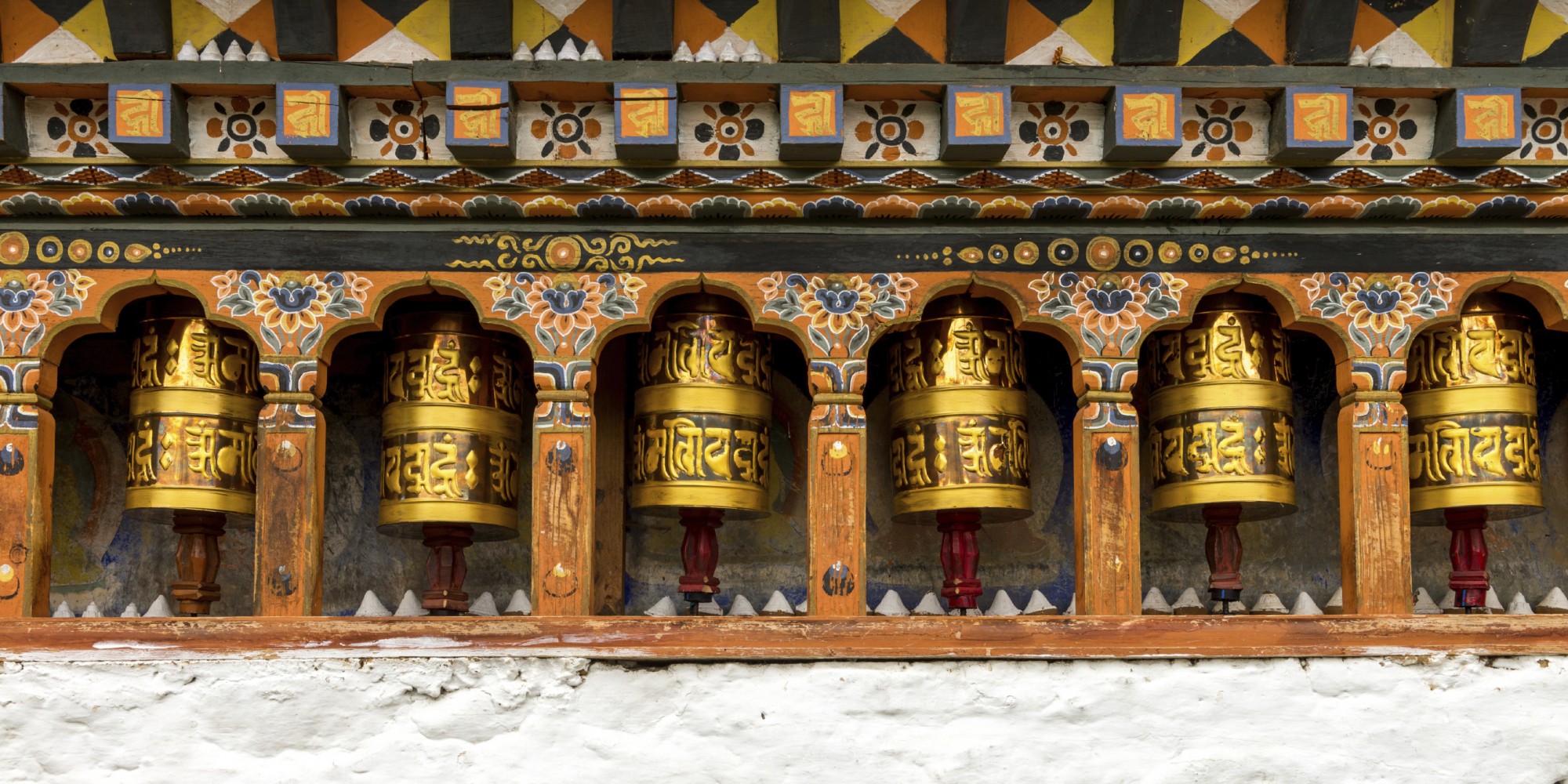
Spirit of Bhutan
This sparsely populated country is steeped in mystery, with a harmonious fusion of the past and present into a vibrant living heritage. The nation of Bhutan is a living canvas of wonderful and theatrical displays of ancient tradition and culture. As a predominately Buddhist country, religion and culture is undeniably interwoven. The spirituality of the Bhutanese play a fundamental role in everyday life, especially the arts, keeping alive the Buddhist teachings and moral values. As such, strong emphasis is laid on the promotion and preservation of its unique culture. By protecting and nurturing Bhutan’s living culture, it is believed that it will help guard the sovereignty of the nation.
One of the most adored legacies of Bhutan is its constant contribution to the tradition of its arts. Due to the royal government’s dedication to preserve the nation’s heritage, its commonplace to find, even in urban towns with modern houses, that buildings maintain some of the basic elements of tradition architecture and paintings found in rural homes. This has made towns uniquely Bhutanese and a delight to visit.
Music
Historically the Bhutanese have shared a distinctive music culture through song and dance to honour their most important rituals, to celebrate and to socialize. The music of Bhutan is an essential part of its culture and plays a leading role in conveying its social values. Traditional Bhutanese music includes genres, ranging from religious to folk song music. Some genres of traditional Bhutanese music make use of vocals, instrumentation, theatre and dance, while others are mainly vocal or instrumental. Instruments such as the lingm (six-holed flute), the dramnyen (similar to a large three-stringed rebec), and the chiwang (Tibetan two-stringed fiddle) are used in both traditional and modern genres of Bhutanese music. Other traditional instruments include tangtang namborong (four-holed bamboo bass flute), kongkha (bamboo mouth harp), and gombu (bull or buffalo horn). While stringed instruments are often played in Bhutanese folk music, religious music usually do not. Interestingly, Bhutanese folk music is hardly ever combined in use with popular music.
Textile traditions
The vibrant textile institution is the jewel of Bhutan’s handicrafts. One of the most distinctive features of the Bhutanese is their traditional dress. Common sight to see Bhutanese in towns and in their homes dressed in their national cloths. A long wrapped fabric for women called a Kira and a shorter robe on men called a Gho. Bhutanese people are proud to dawn their nation clothing, for they believe that it provided them with a unique cultural identity.
Focussed in the eastern regions of Bhutan, the art of weaving has been strongly endorsed by the royal government. Visitors wanting to know more can visit the textile museum established in the capital. Its showcases the evolving journey of Bhutanese’s textiles in the kingdom.
Sports
Whether in the farm villages or urban towns, Bhutanese’s pride themselves on being natural sportsmen and this is exhibited by the large number of traditional and modern sports played in the nation. Most popular of all the sports is archery, the national sport. Practices both with traditional bamboo bows and arrows and modern imported compound bows. An archery game in the town is always more than just a sport. Like the popular Bhutanese festivals, every archery event is a joyous occasion, bright and alive with music.
Food
Bhutanese food, like Bhutanese culture is colourful and vibrant. It combines a tempting blend of spicy chilli flavours with local vegetables and meats. Chillies in all forms and sizes are the toast of local cuisine. Often treated as a vegetable, chillies severed raw with cheese or other dishes constitutes a stable diet in Bhutan. Most dishes are also served with indigenous red rice, while butter tea is a Bhutanese custom. Traditional Bhutanese eating habits are humble, and in general, food is eaten with hands. Families eat while sitting cross legged on wooden floors while the first being served is the head of the household. It is usually women who serve the food and in most cases, the mother. Before eating, a short prayer is offered and a small morsel of food placed on the floor as an offering to the local spirits.
Life Cycle
Until recently, arranged marriages were commonplace in Bhutan. Marriages are mostly simple affairs and are usually humble in nature. However, elaborate rituals are performed for lasting unions between the bride and the groom. At the end of a marriage ceremony, parents, relatives and friends usually present the newlyweds with traditional offerings of gifts in the form of money and goods. In the Western Bhutan, it was the norm that the husband goes to live in his wife’s house after marriage, while the practice in Eastern Bhutan is for the wife to move into the husband’s home. Divorce is also an accepted norm and carries no shame or disgrace within the Bhutanese society.
The birth of a child is another welcomed occasion. During the first three days after birth, it is generally accepted that the new parents are left alone with their child with little to no visitation from family. On the third day, a short purification ritual is performed after which visitors are welcomed to visit the new born and parents. Since children are valued as forebears of the future, there are no discrimination on the sex of the child. New-borns are not immediately named; this responsibility is usually given to the priest of the local Buddhist temple. Mother and child will receive blessings from the local deity and it was traditional that the name associated with the deity is given. At times, the child is given the name of the day on which the child is born.
The death of a Bhutanese, signifies a mere passing on to a new life. In keeping with the traditions, elaborate rituals are performed to ensure a safe passage and a good re-birth. Customary, the 7th, 14th, 21st and 49th days after a person’s death are considered especially important with prayer flags being erected in the name of the deceased. Bhutanese either bury their dead or carry out ‘Sky Burials’, a process in which the deceased are prepared and left atop high mountains to be devoured by vultures in a final act generosity.

